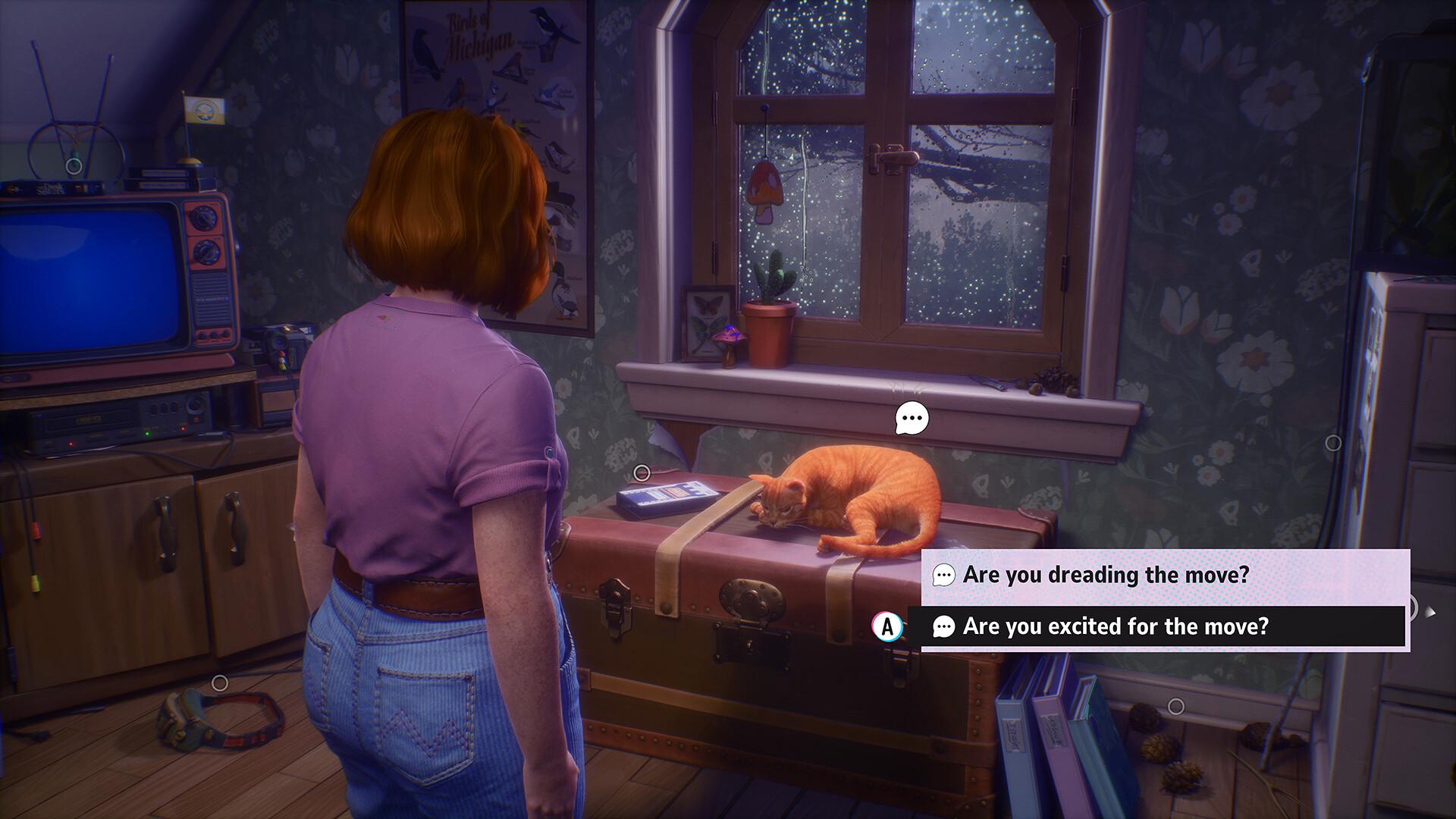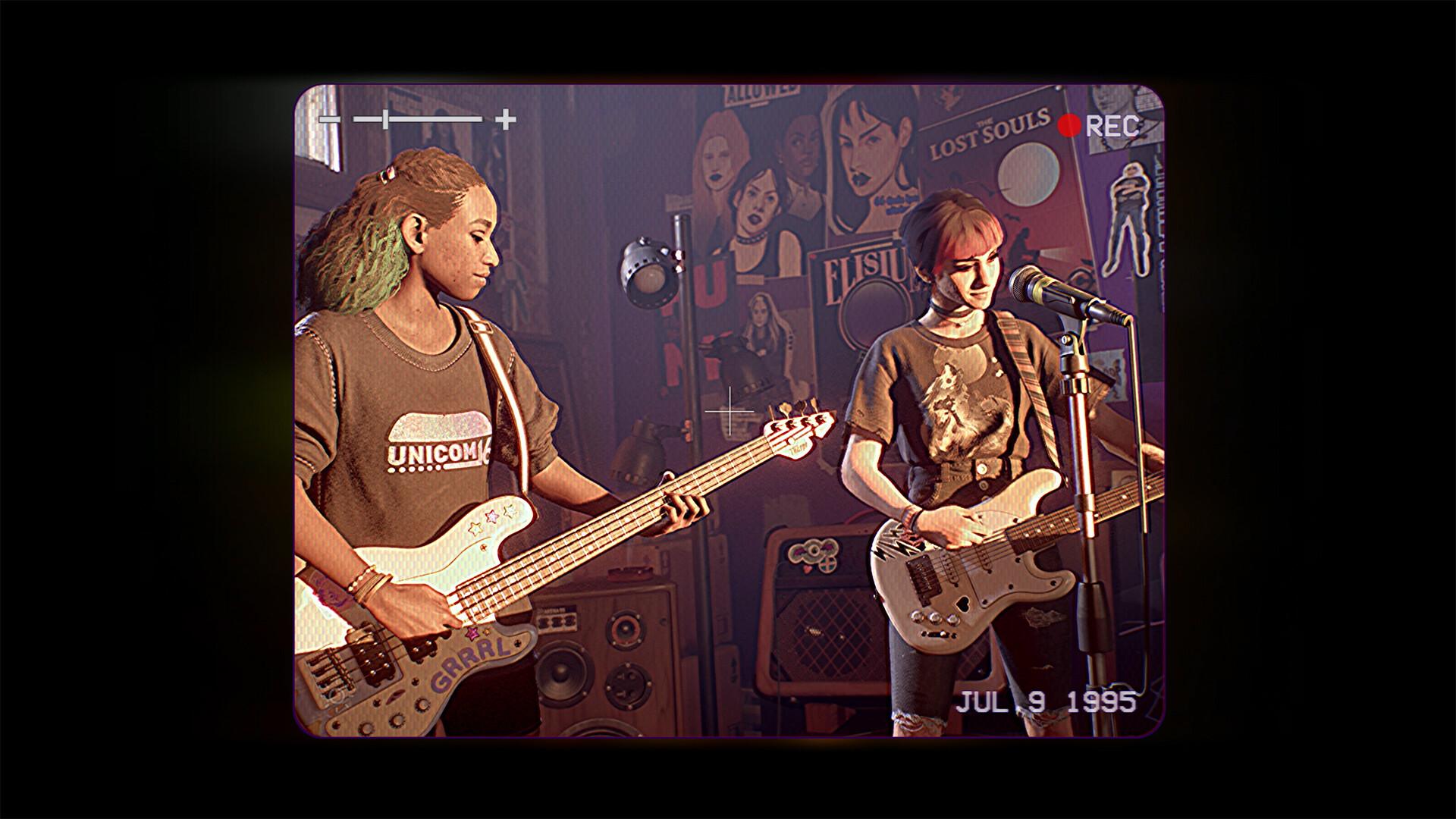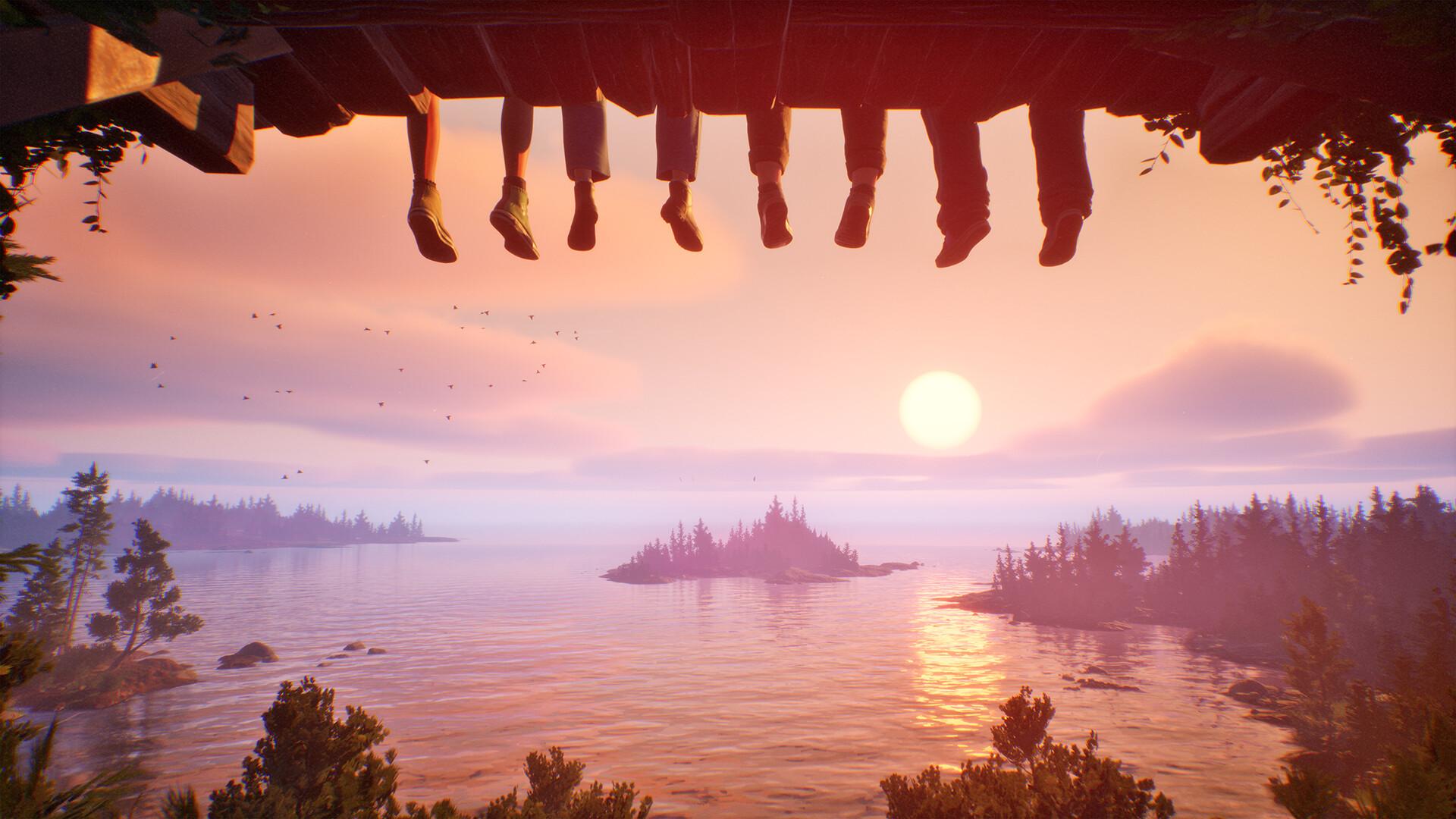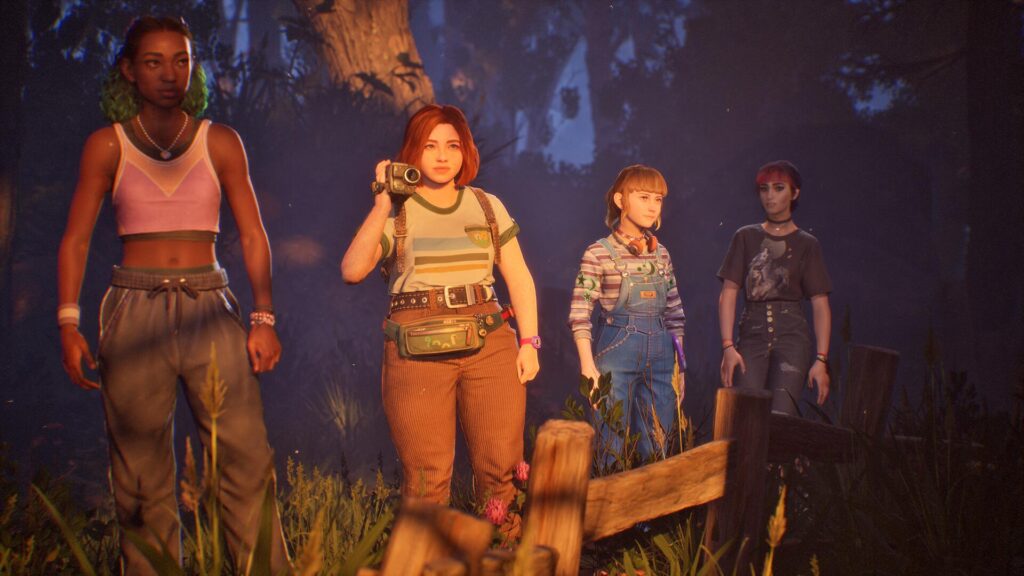
by
Lee Mehr
, posted 15 hours ago / 702 Views
Reviewer’s Note: Various story critiques demand I get into SPOILERS to make my point. Read on at your own risk.
Reunions can be a nerve-wracking experience. You’re not only facing down an old friend who may – potentially – tarnish their previous reputation, but you’re also facing a blemished reflection. What sort of hopes and dreams did you vocally share with your old gang that haven’t come to fruition? What blind spots from your past experience could be revealed from a different vantage point? In Lost Records’ case, the latter question is its main hook. After a 27-year hiatus, lead protagonist Swann Holloway is called by an old friend to return to her hometown: Velvet Cove, Michigan. What initially seems like a call to reminisce about the good ‘ole days transforms into a deeper investigation about the fated summer of 1995 that caused their friendship to wither and die.
Swann’s past friend, Autumn, is the first to reconvene at the local bar. With her she carries what’s essentially a Sword of Damocles: a box wrapped in old newspapers and marked with ominous symbols. It’s addressed to “Bloom & Rage.” But even before revealing the name’s significance, both of them can’t recall much beyond the group’s previous promise of never seeing each other again. So, it’s less of an unreliable narrator trope and more of each narrator’s foggy memory – conveniently – rekindling through collaboration. Most of the time spent in the current year is just first-person dialogue decisions with someone (usually Autumn) sitting across the bar booth. In 1995, you’re back to playing the latest Life is Strange (LiS) in all but name.
It’s fitting, then, how similar Swann is to Maxine Caulfield. Paralleling Max’s Polaroid, Swann’s camcorder acts as both a mechanical and thematic element. During gameplay, she’s capturing both important and ancillary events through it and then stitching them together as either a documentary short, music video, or pet project. Just find the points of interest marked through the camcorder’s UI, properly frame the shot to record a short clip, and repeat until you acquire enough to make a video collage. In the story, her cinematic eye unintentionally creates the inciting incident for meeting her new friends: Autumn, Nora, and Kat. Spliced within these past events are cuts back to the present day for dialogue choices or non-disruptive commentary on what just occurred.
On its face, the premise seems fine. There are a few neat visual flourishes – like how the transitions between timelines have a distorted VHS effect – plus there’s something more to collaboratively reviewing past events that can make for compelling drama. But for all that potential, Jean-Luc Cano, Desiree Cifre, & Nina Freeman’s script often uses this to simply exposit about events or emotions that players can interpret on their own. Roughly half of these disruptive cuts back to the present-day bar feel more in service to flexing improved facial animations. Whether through past/present transitions, reminiscing voiceover lines, or empty background audio, there’s this incessant need for someone to yap about something.

To add more annoyance to this poorly-paced cake, there’s (currently) no ability to skip dialogue – not even when replaying in Collectible Mode. A sizable part of why this QoL feature feels necessary is the protracted time between major plot points. To keep things as vague as possible: obviously, there’s a larger mystery connected to the girls’ hazy memories, but even with DON’T NOD’s weaker titles (e.g. Twin Mirror), the writers remember to sell the hook as early as possible. Lost Records takes the opposite route, opting for something closer to a sex-swapped Stand by Me with a “girrrrl power” punk aesthetic; it’s a hangout movie, with the length of two before it actually reaches the big mystery.
That sort of slower character exploration can work for someone like Richard Linklater (Dazed & Confused, The Before trilogy), but I actually want to hang out with his authentic characters. Ironically, Swann & Co.’s summer adventure feels more emotionally rudderless by comparison because of its inane writing. Of all the crew, Kat is the closest analogue to LiS’s Chloe: most sympathetic backstory, girl punk music obsession, and excessive swearing mistaken as acerbic wit; yet, she doesn’t really have the same pull because you – the player – don’t interface with her familial life. Even though Chloe’s “Step-Douche” suffered a few writing pitfalls, there’s a stronger connection in witnessing those fraught dynamics firsthand for the eventual payoff. All that’s really gleaned from Kat is her parents are uptight Christians who work hard and try to provide, so her explosive moments feel forced and cringe-inducing.

Such artifices aren’t limited to one character; they’re endemic to the story and even dialogue decisions. For starters, The Big Bad’s stated and implied traits make no sense with regards to both his proximity to Kat’s world and the ways in which he’s conveniently thwarted. To keep it as vague as possible, these dynamics pose more questions than they answer. Similar confusion can be made over the impact of certain player choices. To Lost Records’ credit, there’s a greater degree of consequence than the typical TellTale ‘someone will remember that’ notification. There are more finale permutations than I anticipated. The only issue is that also means several seemingly-innocuous decisions, like retrieving the wrong person’s toothbrush, can carry an exaggerated influence.
Perhaps the worst thing about this lumpy pacing is how both genre halves are inherently weaker as a result. Outside of their first sequence together, most of the story consists of “…and then this happened” scenarios without strong character writing to support it. Granted, this is coming from someone who’s not the immediate target audience, so perhaps I may not be the best judge; that said, despite similar romantic inclinations and anti-authority punk attitudes, Gone Home’s Samantha is far more compelling without ever seeing her on-screen – and in a shorter runtime too. And once the mystery element plays a bigger role, it becomes a hodgepodge of under-explained rules and confused character motivations.
Even trying to wrap my head around everything brings on a migraine. It’s so fascinating to think of what compelled DON’T NOD to have such molasses pacing alongside not allowing players to skip past dialogue. I mean, sure, the new emphasis on photorealism results in detailed faces: acne, freckles, and so on; moreover, the visual design’s overall consistency is Lost Records’ best quality (of the few good ones it has). But that shouldn’t compel a team to then force everyone into watching what’s often a quasi-movie at the same pace, especially once its cinematic flourishes start feeling masturbatory.

A chief reason why stems back to its stultifying game design. Now, this comes with the obvious disclaimer about the sub-genre’s lesser interest in mechanical mastery or tactical decision-making. That’s never been the point. But even against its other contemporaries, this ranks so low because of how often you’re railroaded into making one micro-interaction before watching the next protracted cutscene. After being in a melancholic daze for several hours doing this – alongside a menial puzzle or two – I felt a jolt of lightning after finishing a short stacking challenge in Tape 2. That also serves as a fitting microcosm: morsels of engaging interactivity smothered by staleness.
Being a mechanically-light narrative adventure doesn’t have to be a sin on its own. So, it’s a shame when titles like Lost Records: Bloom & Rage serve as such a bad example. Again, from a bird’s eye view, the understated ways DON’T NOD reinterprets what could’ve been Life Is Strange concepts and dual timelines had some potential. But the end result is more like YA slop dumped into a feeding trough than a cohesive story; a confused title that’s either uncaring or outright hostile about pacing, internal logic, and player engagement, ranking itself the worst album in this developer’s oeuvre.
Contractor by trade and writer by hobby, Lee’s obnoxious criticisms have found a way to be featured across several gaming sites: N4G, VGChartz, Gaming Nexus, DarkStation, and TechRaptor! He started gaming in the mid-90s and has had the privilege in playing many games across a plethora of platforms. Reader warning: each click given to his articles only helps to inflate his Texas-sized ego. Proceed with caution.
VGChartz Verdict
This review is based on a digital copy of Lost Records: Bloom & Rage for the XS, provided by the publisher.Read more about our Review Methodology here
More Articles

